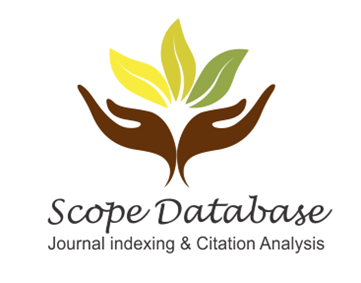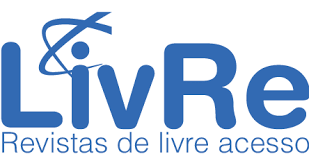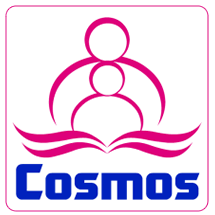LA EVOLUCIÓN TECNOLÓGICA DEL SEGUIMIENTO FETAL EN LA ATENCIÓN DEL EMBARAZO
DOI:
https://doi.org/10.47820/jht.v1i4.21Palabras clave:
Mortalidad perinatal, Vitalidad fetal, Telemedicina, Tecnología médicaResumen
El contexto actual de la actividad médica exige de los obstetras una amplia comprensión de los avances científicos y tecnológicos. El objetivo de este artículo es revelar la evolución histórica de las prácticas médicas y la tecnología en un campo particular de la salud, a saber, la salud del feto y las prácticas médicas de su seguimiento, frente a los enormes avances tecnológicos que se han producido en el suministro de tecnologías transversales con uso potencial en este campo en particular. La metodología utilizada fue una revisión bibliográfica no sistemática realizada en revistas científicas del campo médico, y para la interpretación del material recogido se adoptó el enfoque del sistema de innovación sectorial, que puede definirse como una red de agentes que interactúan en un campo tecnológico específico. Los principales resultados de la investigación muestran que a lo largo de los siglos, con el avance de la tecnología, se han propuesto nuevos equipos para eliminar las limitaciones de la interpretación interobservador, permitiendo así nuevos estudios aleatorios multicéntricos. Además, ha quedado claro que la crisis sanitaria causada por el Coronavirus limitó, rompió e interrumpió la atención presencial en todos los campos médicos y sirvió como trampolín para acelerar el uso de sistemas electrónicos e inteligencia artificial en la atención médica. Y finalmente, se puede observar que el proceso de difusión tecnológica encuentra varias tensiones entre quienes defienden la atención prenatal remota y quienes tienen aversión o desconfianza hacia la modernización,
Descargas
Citas
BARTON, J. L. et al. Envisioning Shared Decision Making: A Reflection for the Next Decade. MDM Policy & Practice, v. 5, n. 2, p. 1-9, 2020. Available at: https://doi.org/10.1177/2381468320963781. Access on: 19 Apr. 2021. DOI: https://doi.org/10.1177/2381468320963781
BRASIL. Ministério da Saúde. Secretaria de Atenção à Saúde. Departamento de Atenção Básica. Atenção ao Pré-Natal de baixo risco. Brasília: Ministério da Saúde, 2012. 318 p., il. (Série A. Normas e Manuais Técnicos) (Cadernos de Atenção Básica, n° 32).
CAETANO, R.; VIANNA, C. M. M. Processo de inovação tecnológica em saúde: uma análise a partir da organização industrial. Cadernos Saúde Coletiva, v. 14, n. 1, p. 95-112, 2006.
CATAPULT-VENTURES. Monica Healthcare, [2021?]. Available at: http://www.catapult-ventures.com/all-investments/monica-healthcare-limited/7175.
Access on: 8 Apr. 2021.
COSTA, A. G.; GADELHA, P. S.; LIMA, G. P. Análise crítica dos métodos de avaliação da vitalidade fetal com base em evidências científicas. Femina, v. 37, n. 8, p. 453-457, 2009.
CHAZAN, L. K.; CAETANO, R. Pioneiros da ultrassonografia obstétrica no Brasil. Relatório de pesquisa de pós-doutorado – Universidade do Estado do Rio de Janeiro, Instituto de Medicina Social, 2008.
F-MAM SOCIETY. Gravador de medição de aceleração de movimento fetal (FMAM), 2021. Available at: http://e-mother.co-site.jp/index_en.html. Access on: 8 Apr. 2021.
GE HEALTHCARE. Novii Wireless Patch System, 2021. Available at: https://www.gehealthcare.com/products/maternal-infant-care/fetal-monitors/novii-wireless-patch-system. Access on: 8 Apr. 2021.
GOLDENBERG, R. L. et al. Stillbirths and neonatal mortality as outcomes. International Journal of Gynecology & Obstetrics, v. 123, n. 3, p. 252-253, 2013. Available at: https://obgyn.onlinelibrary.wiley.com/doi/full/10.1016/j.ijgo.2013.06.020. Access on: 18 Apr. 2021. DOI: https://doi.org/10.1016/j.ijgo.2013.06.020
HASENCLEVER, L. et al. Diffusion and incorporation of technology into the health care system: problems an Inequities. In: PYKA, A.; FONSECA, M.G.F. Catching up, spillovers and innovation networks in a schumpeterian perspective. Berlin: Springer Verlag, 2011. p. 235-255. DOI: https://doi.org/10.1007/978-3-642-15886-5_11
HAVERKAMP, A. D. et al. The evaluation of continuous fetal heart rate monitoring in high-risk pregnancy. American Journal of Obstetrics & Gynecology, v. 125, n. 3, p. 310-320, 1976. Available at: https://www.ajog.org/article/0002-9378(76)90565-2/pdf. Access on: 8 Apr. 2021. DOI: https://doi.org/10.1016/0002-9378(76)90565-2
HCTS. Sense4Baby: A portable and wireless pregnancy monitoring system. Holanda, 2021. Available at: https://ict.eu/healthcare/it-solutions-for-obstetrics/sense4baby/. Access on: 18 Apr. 2021.
HEUVEL, J. F. M. V. D. et al. Home-based telemonitoring versus hospital admission in high risk pregnancies: a qualitative study on women’s experiences. BMC pregnancy and childbirth, v. 20, n. 1, p. 1-9, 2020. Available at: https://bmcpregnancychildbirth.biomedcentral.com/articles/10.1186/s12884-020-2779-4. Access on: 18 Apr. 2021. DOI: https://doi.org/10.1186/s12884-020-2779-4
HOFMEYR, G. J.; NOVIKOVA, N. Management of reported decreased fetal movements for improving pregnancy outcomes. Cochrane Database of Systematic Reviews, v. 4, n. 4, 2012. Available at: https://www.cochranelibrary.com/cdsr/doi/10.1002/14651858.CD009148.pub2/epdf/full. Access on: 18 Apr. 2021. DOI: https://doi.org/10.1002/14651858.CD009148.pub2
HON, E. H. An Atlas of fetal heart rate patterns. Connecticut: Harty Press; New Haven, 1968.
SANTOS, H. C. O.; AMARAL, W. N.; TACON, K. C. B. A história da ultrassonografia no Brasil e no mundo. EFDeportes.com, Buenos Aires, Año 17, n. 167, abr. de 2012. Available at: https://efdeportes.com/efd167/a-historia-da-ultrassonografia.htm#:~:text=Em%201957%2C%20Douglas%20Howry%2C%20m%C3%A9dico,para%20a%20realiza%C3%A7%C3%A3o%20do%20exame. Access on: 25 Sep. 2022.
L’AULNOIT, A. H. de et al. Development of a Smart Mobile Data Module for Fetal Monitoring in E-Healthcare. Journal of medical systems, v. 42, n. 5, 2018. Available at: https://link.springer.com/article/10.1007/s10916-018-0938-1. Access on: 18 Apr. 2021. DOI: https://doi.org/10.1007/s10916-018-0938-1
MALERBA, F. Sectoral systems of innovation and production. Research Policy, v. 31, p. 247-64, 2002. DOI: https://doi.org/10.1016/S0048-7333(01)00139-1
MANGESI, L.; HOFMEYR, G. J.; SMITH, V. Fetal movement counting for assessment of fetal wellbeing. Cochrane Database of Systematic Reviews, n. 1, p. 1-19, 2007. DOI: https://doi.org/10.1002/14651858.CD004909.pub2
MANNING, F. A.; PLATT, L. D.; SIPOS, L. Antepartum fetal evaluation: development of a fetal biophysical profile. American Journal of Obstetrics and Gynecology, v. 136, n. 6, p. 787-795, 1980. Available at: https://www.sciencedirect.com/science/article/abs/pii/0002937880904573. Access on: 8 Apr. 2021. DOI: https://doi.org/10.1016/0002-9378(80)90457-3
MERCADO LIVRE. Eletrônicos, áudio e vídeo. Componentes eletrônicos. Semicondutores. Microcontroladores. Esp32. Osasco, 2021. Available at: https://produto.mercadolivre.com.br/MLB-942296004-esp32-_JM. Access on: 10 Jul. 2021.
NOMURA, R. M. Y.; MIYADAHIRA, S.; ZUGAIB, M. Avaliação da vitalidade fetal anteparto. Revista Brasileira de Ginecologia e Obstetrícia, v. 31, n. 10, p. 513-526, 2009. Available at: https://doi.org/10.1590/S0100-72032009001000008. Accesso on: 19 Nov. 2009. DOI: https://doi.org/10.1590/S0100-72032009001000008
PANETH, N.; BOMMARITO, M.; STRICKER, J. Electronic fetal monitoring and later outcome. Obstetrical & Gynecological Survey, v. 49, n. 1, p. 17-19, 1994. DOI: https://doi.org/10.1097/00006254-199401000-00009
PEREIRA, B. G. et al. Percepção materna de movimentos fetais como método de avaliação da vitalidade fetal em gestantes diabéticas. Revista Brasileira de Ginecologia e Obstetrícia [online], v. 21, n. 10, p. 579-584, 1999. Available at: https://doi.org/10.1590/S0100-72031999001000003. Access on: 25 set. 2022. DOI: https://doi.org/10.1590/S0100-72031999001000003
RIBEMONT-DESSAIGNES, A.; LEPAGE, G. Traité d’Obstétrique. Paris: Masson et cie., 1923.
RYO, E. et al. New method for long-term home monitoring of fetal movement by pregnant women themselves. Medical Engineering & Physics, v. 34, n. 5, p. 566-572, 2012. Available at: https://www.sciencedirect.com/science/article/abs/pii/S1350453311002268?via%3Dihub. Access on: 8 Apr. 2021. DOI: https://doi.org/10.1016/j.medengphy.2011.09.001
SARAVÍ, F. D. El estetoscopio revoluciona la obstetricia. Revista Médica Universitária, v. 10, n. 2, p. 1-31, 2014. Available at: https://bdigital.uncu.edu.ar/objetos_digitales/6410/rmuhistoriasdelamedicina.pdf. Access on: 8 abr. 2021.
SCHRAMN, K. et al. Acceptance of a new non-invasive fetal monitoring system and attitude for telemedicine approaches in obstetrics: a case-control study. Archives of gynecology and obstetrics, v. 298, n. 6, p. 1085-1093, 2018. Available at: https://pubmed.ncbi.nlm.nih.gov/30264201/. Access on: 18 Apr. 2021. DOI: https://doi.org/10.1007/s00404-018-4918-y
SOLIANI, E. M. C. Radar Absorbent Materials. Thin Flexible Narrow Band Resonating Radar Absorbent. Via Varesina, 2021. Available at: https://www.solianiemc.com/en/p/thin-flexible-narrow-band-resonating-radar-absorbent/. Access on: 10 Jul. 2021.
STEER, P. J. Commentary on ‘Antenatal cardiotocogram quality and interpretation using computers’. BJOG, v. 121, n. 7, p. 9-13, 2014. Disponível em: https://obgyn.onlinelibrary.wiley.com/doi/10.1111/1471-0528.13151. Acesso em: 18 abr. 2021. DOI: https://doi.org/10.1111/1471-0528.13151
TAGLIAFERRI, S. et al. Telemedicine to improve access to specialist care in fetal heart rate monitoring: analysis of 17 Years of TOCOMAT network clinical activity. Telemedicine and e-Health, v. 23, n. 3, p. 226-232, 2017. Available at: https://pubmed.ncbi.nlm.nih.gov/27642802/. Access on: 18 Apr. 2021. DOI: https://doi.org/10.1089/tmj.2016.0087
WACKER-GUSSMANN, A. et al. Fetal cardiac time intervals in healthy pregnancies – an observational study by fetal ECG (Monica Healthcare System). Journal of Perinatal Medicine, v. 46, n. 6, p. 587-592, 2018. Available at: https://pubmed.ncbi.nlm.nih.gov/28453441/. Access on: 18 Apr. 2021. DOI: https://doi.org/10.1515/jpm-2017-0003
WHO, Joseph. Dussik Bio. Obstetric Ultrasound History Web, 2015. Available at: https://www.ob-ultrasound.net/dussikbio.html. Access on: 25 Sep. 2022.
WIKIWAND. Adolphe Pinard, [2021?]. Available at: https://www.wikiwand.com/en/Adolphe_Pinard. Access on: 10 Jul. 2021.
Descargas
Publicado
Cómo citar
Número
Sección
Categorías
Licencia
Derechos de autor 2022 Revista Salud y Tecnología - JHT

Esta obra está bajo una licencia internacional Creative Commons Atribución 4.0.
Los derechos de autor de los artículos publicados pertenecen a JHT, y siguen el estándar Creative Commons (CC BY 4.0), permitiendo su copia o reproducción, siempre y cuando se cite la fuente y se respeten los derechos de autor y se mencionen en los créditos. Todo y cualquier trabajo publicado en la revista, su contenido es responsabilidad de los autores, siendo RECIMA21 únicamente responsable del vehículo de difusión, siguiendo estándares de publicación nacionales e internacionales.































